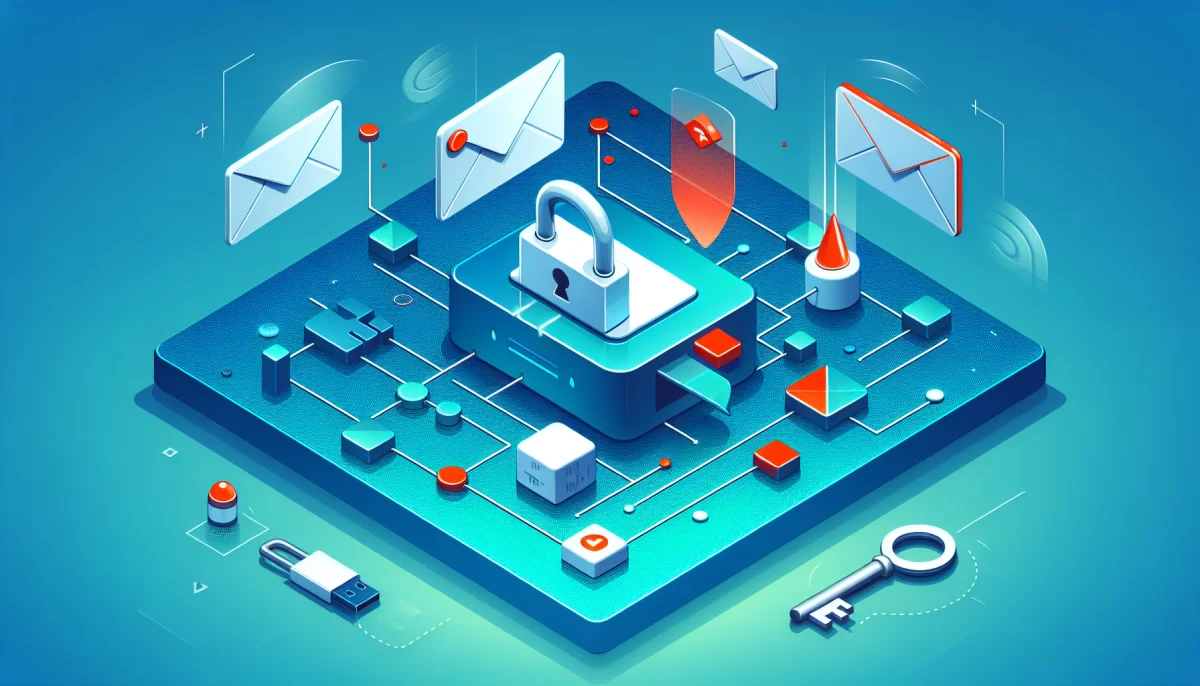Understanding Spamhaus and Its Vital Role in Email Security
Email remains an essential communication channel for businesses, commerce, and personal correspondence worldwide. However, with over 300 billion emails sent daily as of 2023 (Statista), email security is more critical than ever to ensure messages reach their intended recipients.
Spamhaus is a leading nonprofit organization that plays a crucial role behind the scenes in protecting the email ecosystem. This article explores what Spamhaus is, how it functions, why it matters for email security, and the best practices to maintain a clean sender reputation and avoid blacklists.
What Is Spamhaus?
Founded in 1998, Spamhaus is an international nonprofit project dedicated to combating email abuse. Headquartered in Andorra, its mission is to provide real-time, accurate reputation data on IP addresses, domains, and networks to help prevent spam, phishing, malware distribution, botnet activity, and other email-based threats.
Unlike traditional security providers, Spamhaus does not send emails but maintains publicly accessible Domain Name System Block Lists (DNSBLs), commonly called blocklists. These lists are queried by mail servers and security platforms worldwide to determine whether they should accept, reject, or filter incoming emails.
With more than 25 years of proven reliability, Spamhaus’ blocklists are trusted by major ISPs, email providers, hosting companies, and cybersecurity vendors, making it one of the pillars of modern email security.
Core Components: Spamhaus Blocklists and Reputation Services
Spamhaus operates a suite of blocklists and tools, each targeting specific types of abuse. Understanding these components helps organizations manage their email deliverability and security more effectively.
| Blocklist / Tool | Purpose | Implications of Listing |
|---|---|---|
| SBL (Spamhaus Block List) | Tracks IP addresses involved in sending spam, snowshoe spamming tactics, or operating under bulletproof hosting providers that tolerate abusive activity. | Delivery of emails from listed IPs is often blocked or filtered strictly, significantly reducing inbox reach. |
| XBL (Exploits Block List) | Identifies IPs of compromised devices, open proxies, worms, or malware-infected systems used for spamming. | Being listed indicates compromises in network or devices, causing strong filtering or rejection of emails. |
| PBL (Policy Block List) | Covers IP ranges (commonly dynamic consumer IPs) that should not directly send unauthenticated SMTP email. | Listing here generally results in delays or filtering; it helps enforce standard ISP policies for email sending. |
| DBL (Domain Block List) | Focuses on malicious or spam-associated domains found in email bodies or links. | If your domain or URLs appear here, your emails risk being marked as spam or blocked. |
| CSS (Combined Spam Sources) | Detects SMTP traffic abuse over port 25, including unsolicited or spam emails from compromised accounts or systems. | Inclusion often indicates poor list hygiene or security issues requiring immediate attention. |
| ZEN | A consolidated list aggregating entries from SBL, XBL, PBL, and CSS for streamlined querying. | Streamlines filtering processes for operators using Spamhaus data. |
Why Is Spamhaus Essential for Email Security?
Spamhaus is integral to the global email infrastructure for several reasons:
- Wide Adoption: Most ISPs and enterprise email systems query Spamhaus blocklists in real time to decide whether to accept or reject incoming emails.
- Reputation Impact: Listings adversely affect sender reputations, leading to increased spam flags, bounce rates, or outright blocking across multiple platforms.
- Preventing Cybercrime: By identifying compromised systems and malicious domains, Spamhaus helps thwart phishing, malware spread, and fraudulent activities.
- Enforcement Through Policy: Its PBL helps ISPs maintain clean sending policies by blocking unauthorized SMTP traffic from dynamic IPs or consumer pools.
- Delisting and Remediation: Spamhaus provides clear procedures for resolving listings, helping legitimate senders restore their reputation and email deliverability.
According to a 2024 Return Path report, over 20% of legitimate emails fail to reach the inbox due to poor sender reputation and blacklistings, highlighting the critical nature of blocklist management.
How Spamhaus Operates: Step-by-Step Process
- Continuous Monitoring: Spamhaus collects global data from spam reports, network telemetry, malware signatures, and public abuse complaints.
- Abuse Detection & Analysis: Teams analyze the data to identify abusive IPs, compromised domains, or policy violations.
- Blocklist Inclusion: Verified offenders are listed in the appropriate DNSBLs, enabling real-time querying by mail servers worldwide.
- Delisting Procedures: Entities can remediate issues — such as cleaning infections or improving email practices — then request removal from blocklists.
- Ongoing Reputation Tracking: Senders and network operators are encouraged to monitor reputation continuously, using available tools to preempt future listings.
Common Risks Leading to Spamhaus Listings
Understanding what triggers listings helps organizations maintain strong email reputations and avoid deliverability issues. Frequent causes include:
- High bounce rates from sending to stale or invalid email addresses.
- Utilizing purchased, scraped, or non-consensual email lists without proper opt-in.
- Inclusion of spam traps—email addresses designed to identify poor list hygiene.
- Shared or poorly managed IP pools where abuse by others damages collective reputation.
- Failure to implement or misconfiguring email authentication protocols (SPF, DKIM, DMARC).
- Operating compromised mail servers, open relays, or infected client devices.
- Embedding URLs or domains known for malicious activity within email content.
- Poorly crafted email content with spam-like characteristics—misleading subject lines, excessive capitalization, multiple links, or deceptive messaging.
Best Practices to Avoid Getting Listed by Spamhaus
Employing strategic operational and technical measures will help ensure your emails land in inboxes, not blacklists:
- Maintain Clean, Engaged Lists:
- Regularly remove inactive or bouncing addresses.
- Respond promptly to unsubscribe requests and complaints.
- Implement Confirmed Opt-In: Use double opt-in to verify consent and prevent bogus or mistyped addresses.
- Set Up Robust Email Authentication: Properly configure SPF, DKIM, and DMARC to prevent spoofing and build sender trustworthiness.
- Monitor Sender Reputation Proactively: Use Spamhaus tools and third-party services (like Google Postmaster, Microsoft SNDS) to check for blacklisting and reputation metrics.
- Secure Your Email Infrastructure:
- Close open relays and proxies.
- Patch vulnerabilities to avoid compromise.
- Use secure credentials and multi-factor authentication.
- Adopt Responsible Sending Practices:
- Avoid spam trigger words and misleading subjects.
- Balance text and images; limit excessive links.
- Provide clear and easy unsubscribe options.
- Maintain reasonable sending frequency.
- Have Efficient Incident Response Plans: If blacklisted, rapidly investigate, remediate, and submit delisting requests with supporting evidence.
Spamhaus: A Partner and Challenge for Businesses
Businesses using email at scale face dual realities with Spamhaus:
- The Challenge: Blacklisting can disrupt customer communications, harm brand reputation, and cause direct revenue losses.
- The Partner: Spamhaus’ transparency, fair policies, and remediation avenues promote a healthier email ecosystem and encourage best practices for sender hygiene and security.
Organizations that align with Spamhaus guidelines, leverage deliverability expertise, and stay vigilant against abuse consistently achieve higher inbox placement and stronger customer trust.
Spamhaus’ Critical Role in Modern Email Security
Spamhaus safeguards email integrity by providing authoritative, real-time data that ISPs and email platforms rely on to filter spam, phishing, and malware. Key contributions include:
- Maintaining accurate blocklists for IPs, domains, and networks involved in abuse.
- Enabling quick identification and blocking of malicious traffic across global email systems.
- Providing structured remediation processes for legitimate senders to recover their reputations.
- Incentivizing organizations to adopt secure email practices, maintain clean lists, and authenticate messages properly.
Recent studies, including those by Cisco’s Annual Cybersecurity Report (2023), emphasize that nearly 94% of malware is delivered by email, underscoring why organizations must integrate Spamhaus and related tools into their email security strategy.
Overall, understanding Spamhaus is fundamental for any organization that depends on email for customer engagement, marketing, or transactional communications. It is not merely an optional service but a core pillar of email security and deliverability.
Summary
Spamhaus is a cornerstone in the fight against email abuse, offering critical blocklists and reputation data to keep spam, phishing, and malware at bay. By comprehending its components, monitoring sending practices, and adhering to best practices, organizations can maintain high deliverability, protect their brand reputation, and contribute to a safer email environment for all users.
Key Takeaways:
- Spamhaus provides trusted, real-time blocklists essential to email filtering worldwide.
- Multiple specialized blocklists address various types of email abuse and infrastructure issues.
- Maintaining good email hygiene and infrastructure security is vital to avoiding listings.
- Continuous monitoring and prompt remediation form the backbone of sustainable email reputation management.



